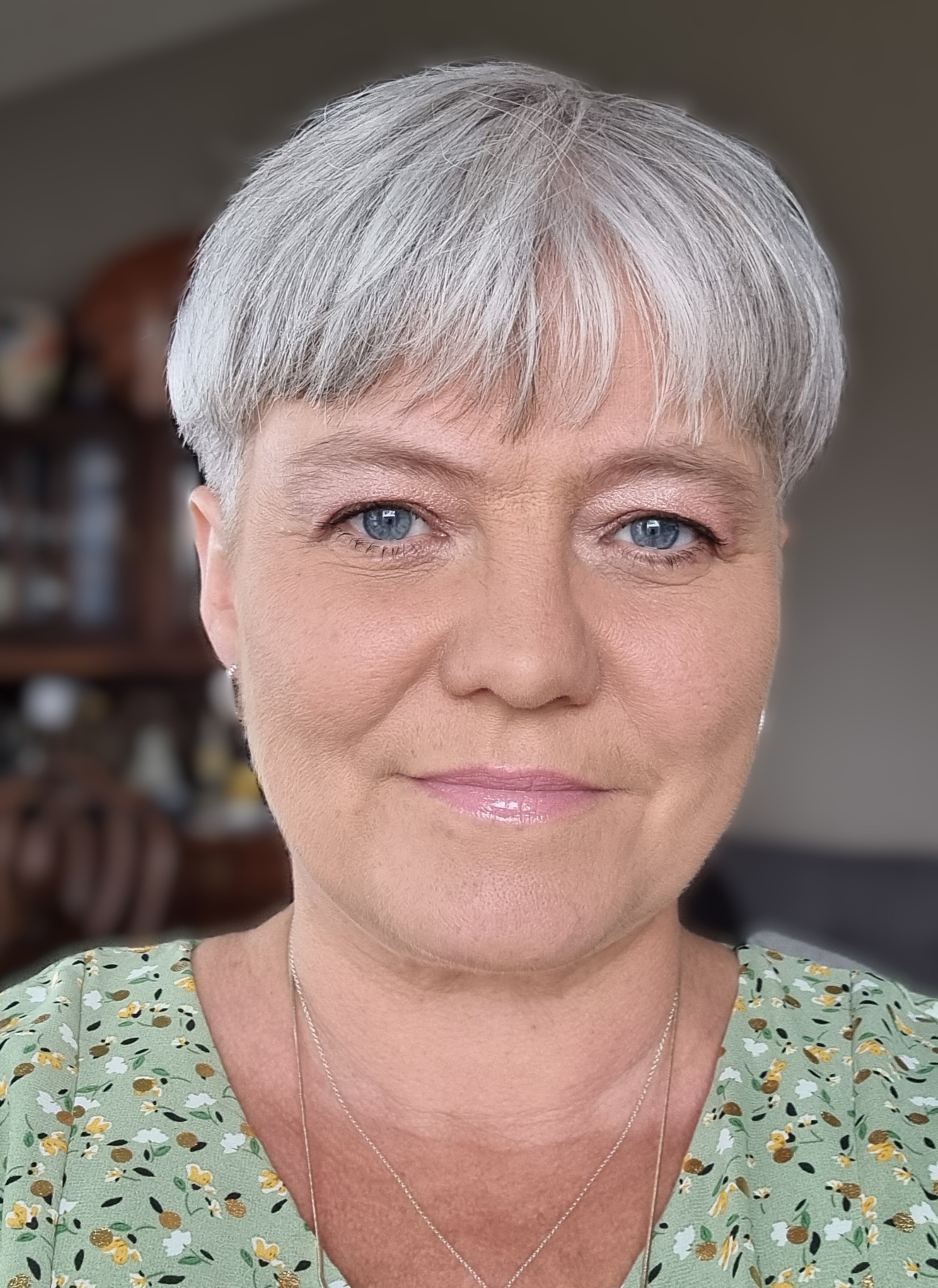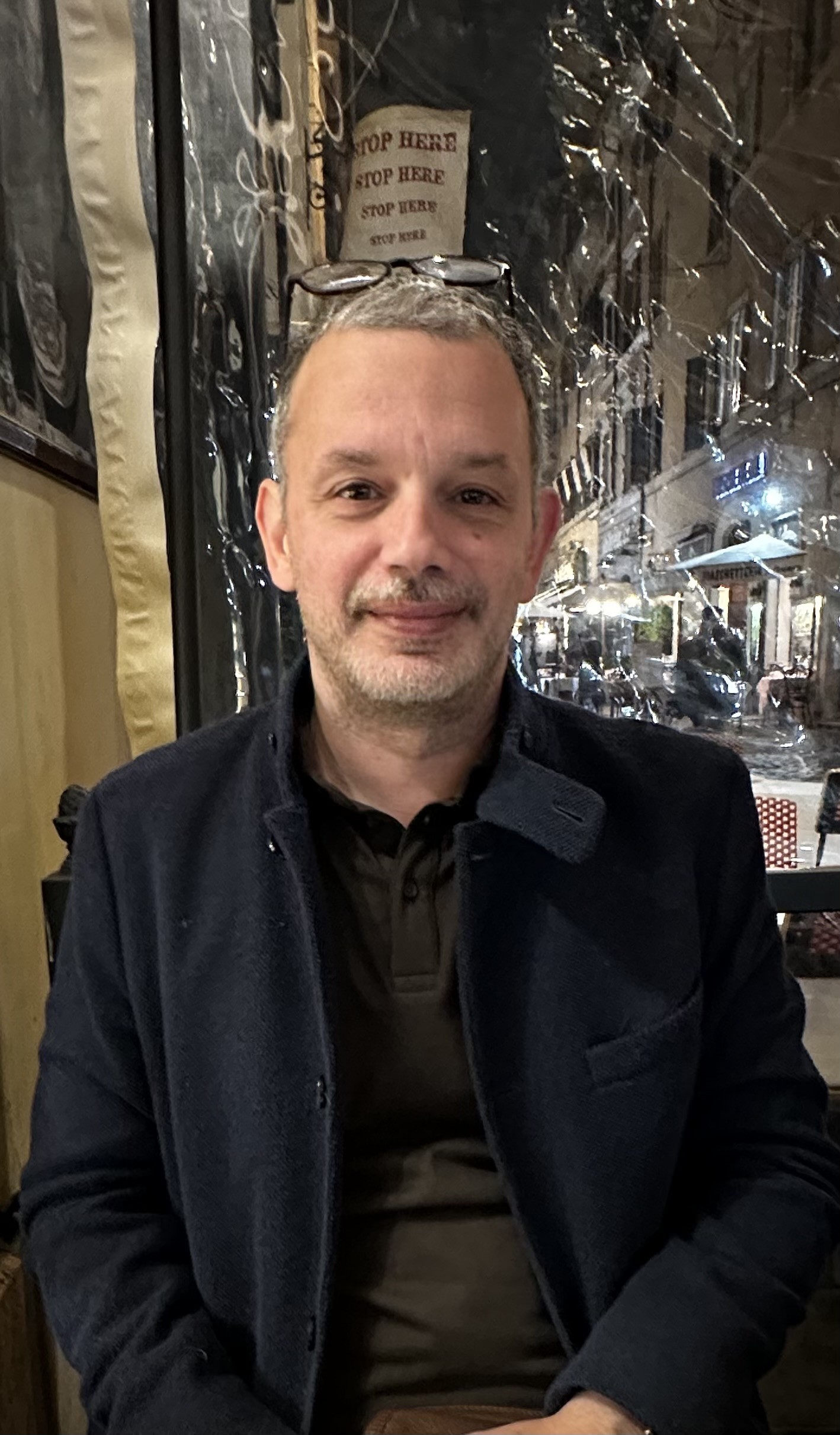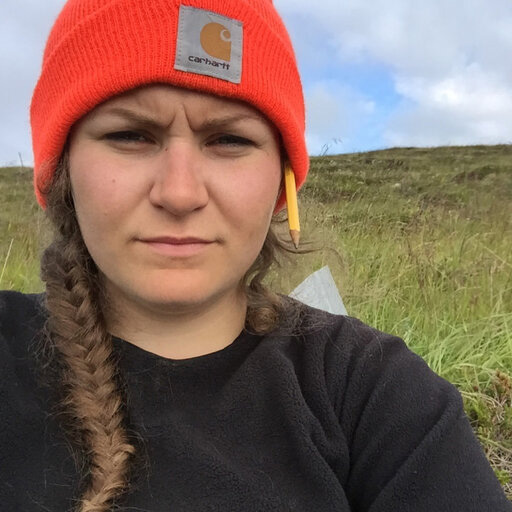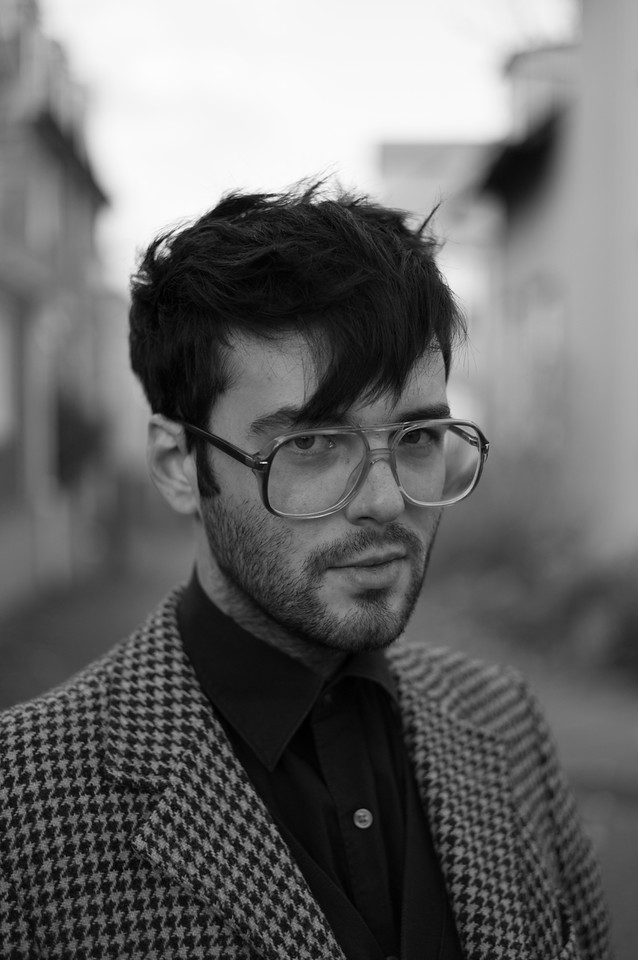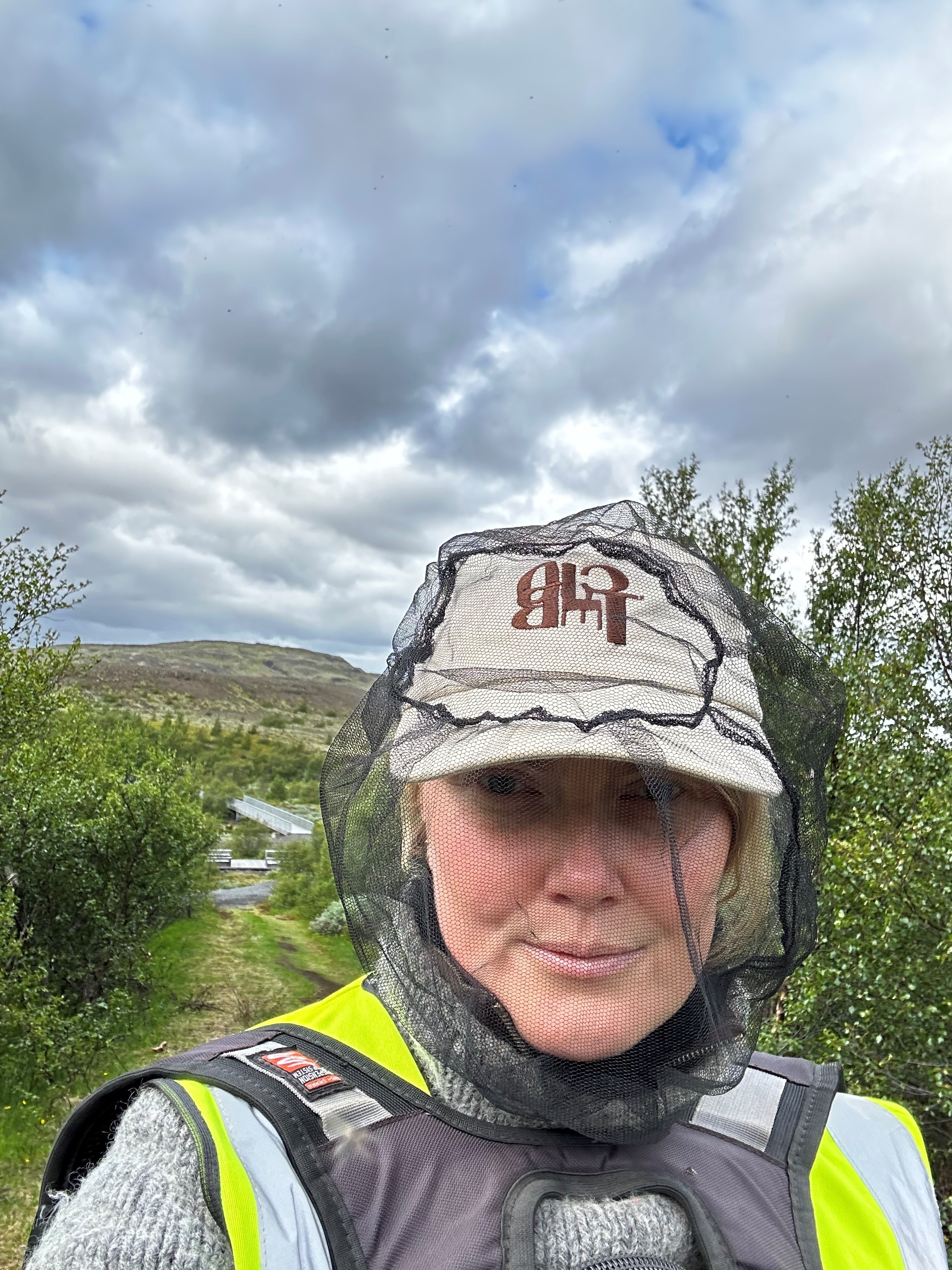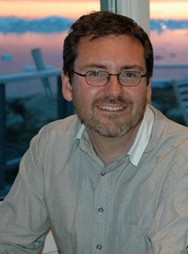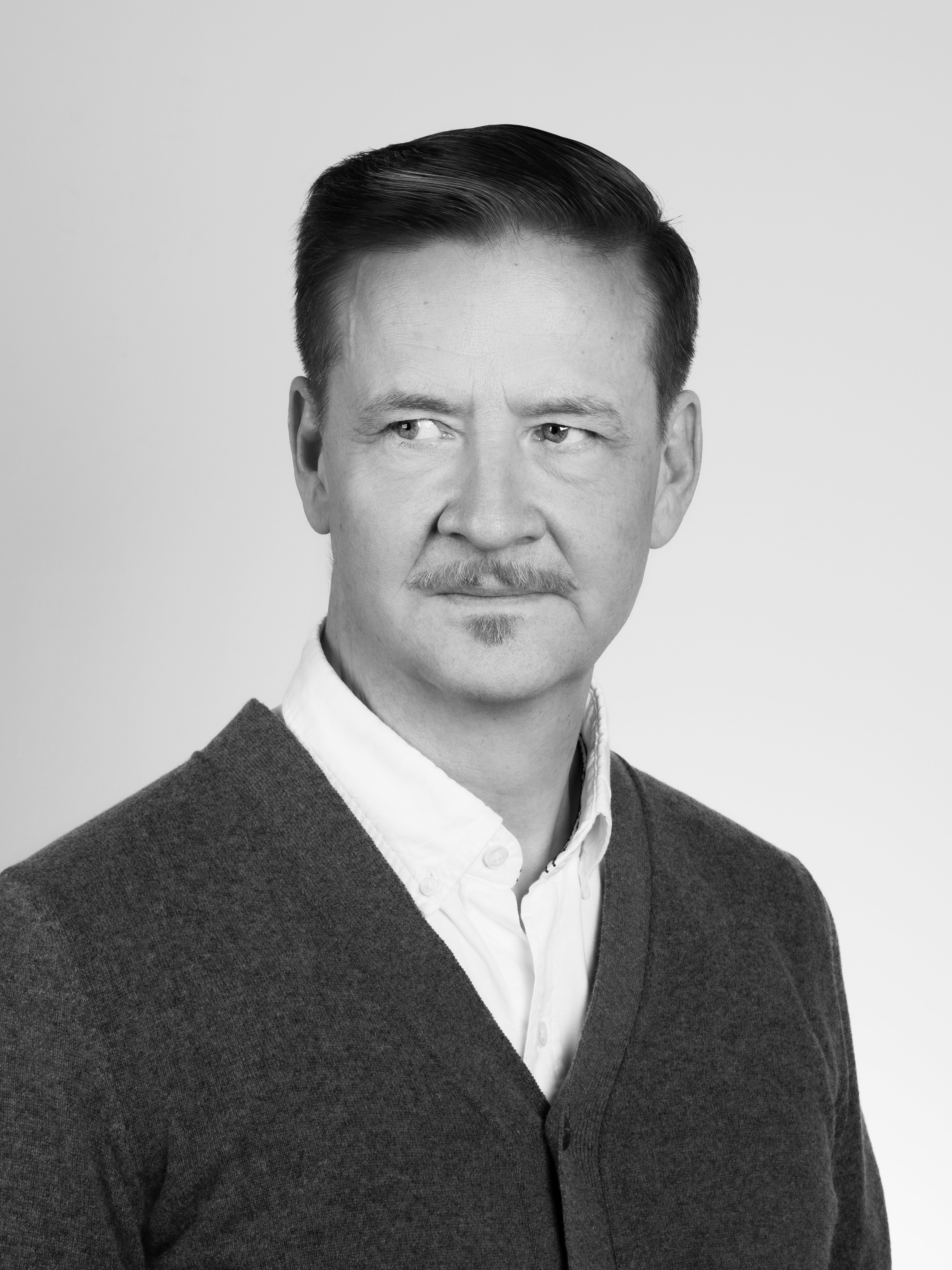|
Alex's doctoral research explores the potential of community engagement as a management tool for Iceland's maritime archaeological sites. Given the universal challenges of managing underwater heritage, involving local communities, particularly sports divers, has shown promise elsewhere around the world. The research is focused on qualitative methods such as interviews, surveys, and workshops with various stakeholders in Icelandic archaeology. The main outcome aims to provide management recommendations to foster a collaborative environment in the future management of maritime sites. |

|
|
Doktorsrannsóknin mín ber titilinn Nunnurnar í Niðarósi og fjallar um nunnuklaustur í erkibiskupsdæminu í Niðarósi á miðöldum, sér í lagi á Íslandi og í Noregi. Hún styðst við ritaðar og fornleifafræðilegar heimildir en markmið hennar er að skilgreina megineinkenni klausturmenningar kvenna á svæðinu og samfélagslegt hlutverk klaustranna. Rannsóknin leitast þannig við að auka hlut nunnuklaustra í klausturrannsóknum sem og þverþjóðlegra nálgana innan þeirra. My PhD project, The Nuns of Nidaros, is a study of female monasticism in the medieval Archdiocese of Nidaros, with focus on Iceland and Norway. Combining archaeological and historical evidence, it seeks to define the shape that monastic ideologies and traditions took on amongst women’s religious communities in the area, and to understand their role in medieval society. The project thus aims to rebalance the part of women in monastic studies, as well as to contribute to the increasing literature of transnational approaches in the field. |

|
|
In the research project “Millennium by the Atlantic Ocean” the scope is from a More-than-human and Rubber boots theoretical view of how humans and non-humans co-existed for a millennium in the seafaring town of Seydisfjordur, East-Iceland. The millennium of history (900-1900 AD) at one farm, Skálanes, and in comparison, 300 years (900-1100 AD) at the longhouse of Fjordur, will give insight into the living conditions and utilization of resources before and after the settlement and through the period of a millennium. Analyzis of 16s rRNA bacteria, targeted PCR of plants and animals from sedaDNA, are the research material, as well as historical evidence of living conditions, vegetation, landslides, weather conditions and utilization of resources. Rannveig works with a research team at Earlham College, Richmond, Indiana. Rannveig’s main supervisor is Dr. Steinunn Kristjánsdóttir. Dr. Egill Erlendsson and Dr. Emmett Smith are also in the PhD supervising board. Rannveig’s research has received funding from the University of Iceland Research Centre in East Iceland and PhD funding [nr. 2410163-051] from the Icelandic Centre for Research (Rannís) in 2024-2025. A SIE 2021 Scholarship grant was received by Thorhallsdottir from Soroptimists in 2021, and travel grants from Hagþenkir in 2023, HÍ in 2024 and the Letterstedska fund in 2025. |

|
|
Haraldur's research aims to explore and understand the lives of past Icelanders whose bodies or mental faculties might have been considered disabled or disabling by modern perceptions. His research period stretches from Iceland's settlement (ca. 900) to 1936, when the first national law concerning disability was passed in Iceland's parliament. The foci of the research are the individuals. Their skeletal remains are ostelogically and palaeopathologically studied, and the remains come from several sites in Iceland, which differ spatially, chronologically and religiously, Pre-Christian, Catholic and Protestant, sites such as Öndverðarnes, Skeljastaðir, Haffjarðarey, Skriðuklaustur and Bessastaðir. Each individual's locality, society and religious aspects are studied via the available contemporary literary sources, such as law books, church annals and censuses. By understanding contemporary social and cultural perceptions and attitudes towards different-bodied people and intertwining that knowledge with data gathered from examinations of the individual's skeletal remains, Haraldur aims to reconstruct the lives of these individuals in the attempt to bring forth their own embodied experiences, emotions and attitudes towards their society and themselves. Haraldur was a part of the interdisciplinary research project Disability before disability, which was led by dr. Hanna Björg Sigurjónsdóttir, prof. of disability studies at the University of Iceland. |
|
Boat Burials in the Viking Age: A New Method for Their Identification.
| Boat burials are an iconic aspect of Viking Age mortuary customs, reflecting the world views and mentalities which give that period its specific character. Boat burials are a key to understanding Viking Age culture, but their study has, however, been hampered by the difficulty in securely identifying whether a grave featured a boat or not. In most cases, only iron fasteners survive as possible evidence of the presence of a boat in a grave, but determining whether they derive from a boat has proven difficult and different criteria have produced widely different results. Based on the examination of confirmed boat burials and their features, focusing in particular on the iron fasteners, this project will develop a robust methodology to positively identify boat burials. This method will allow for a a reassessment of the frequency and distribution of boat burials, to place future debates about the custom’s significance and meaning on a sounder footing. |

|
All you can eat – Evaluating past diet In Iceland with Lipid analysisDietary habits in Iceland in the past have generally been investigated archaeologically through plant remains, zooarchaeological methods, studies on artifacts associated with foodstuff, and isotope studies on human remains. However, modern scientific methods have proven essential to our search and understanding of people in the past, alongside their diets, cultures, and ways of life, especially over the last 20 years. Lipid analysis, though not completely absent in Iceland, is a vastly under-utilised method and data source. The aim of the research project is to evaluate the potential of such analysis for archaeological research on dietary habits in past Iceland. The project is divided into four phases, each ending with a peer-reviewed article. In phase one, an archaeological experiment will be conducted, examining lipid preservation in various materials of known use in ancient Iceland. The second phase will be based on the results from the experiment, guiding sample selection and prepared from the archaeological collection. In phase three, a few well-documented archaeological sites in Iceland will be selected for comparison with other dietary data. Finally, the project aims to shed new light on past dietary habits in Iceland, according to the results and comparisons derived from the first three phases of the project. |

|
| Delaney’s research analyzes landscapes around late medieval (ca. 1100 – 15500) monasteries in Iceland and Scotland to answer the big questions: where were these communities sourcing water and how were they using it? By creating case studies of Þingeyraklaustur in northern Iceland and Lindores Abbey in southeast Scotland, this project uses a combination of methods including review of contemporary literature, spatial analysis enabled through ArcGIS, and artifact analysis. These methods are utilized to understand what lands they possessed and how they were used, what possibilities (in landscape archaeology terms, affordances) the landscapes provided, and how their respective religious cultures influenced water use and architecture. In addition to being descriptive, this research seeks to find comparisons between monastic cultures and their uses of water based on environmental and cultural similarities. |

|
Einar Ísaksson
Kristin Linnea Robberstad Moeller-Nilsen
| Sviðsstjóri rannsóknar- og miðlunarsviðs hjá Minjastofnun Íslands. Unnið við stjórnsýslu menningarminja frá árinu 1998. Kennir hluta námskeiðsins Vernd menningarminja á Íslandi – lagaumhverfi og stjórnsýsla. |
|
Dr. Angelos Parigoris is a sessional teacher in the Department of Archaeology at the University of Iceland. He holds a BA in Archaeology, an MA in Theory and Philosophy of Archaeology, and a Diploma in Cultural Landscape Management from the University of Wales, Lampeter, as well as a PhD from the University of Iceland on the politics of the past. With over 25 years of archaeological experience in Ireland and Iceland—from fieldworker to excavation director—his research interests focus on the politics of the past, particularly nationalism and colonialism, as well as theoretical archaeology and archaeological methods and techniques. Dr. Parigoris teaches Methods I, Methods II, and Field Work Experience in Archaeology (the department’s fieldschool excavation), and has also contributed to courses such as Gender Archaeology, Theoretical Archaeology, and Theories in Humanities. Dr. Angelos Parigoris er stundakennari í fornleifafræði við Háskóla Íslands. Hann er með BA-gráðu í fornleifafræði, MA-gráðu í kenningum og heimspeki fornleifafræði og diplómu í stjórnun menningarlandslags frá University of Wales, Lampeter. Hann lauk doktorsprófi í fornleifafræði við Háskóla Íslands með rannsókn á stjórnmálum fortíðarinnar. Hann hefur yfir 25 ára reynslu af fornleifafræðistörfum á Írlandi og Íslandi, allt frá vettvangsmanni til leiðanda fornleifarannsókna. Rannsóknaráhugi hans beinist að stjórnmálum fortíðarinnar, einkum þjóðernishyggju og nýlendustefnu, auk kenningafræði og aðferða fornleifafræði. Dr. Parigoris kennir Aðferðarfræði I, Aðferðarfræði II og Fornleifarannsókn á vettvangi (vettvangsnám deildarinnar), og hefur einnig kennt áföng eins og Kynjafornleifafræði, Kenningar í fornleifafræði og Kenningar í hugvísindum. |
| Grace is a zooarchaeologist who has been working in Iceland since 2014. Her research interests are varied, and past projects include work on the use of birds in the North Atlantic from the Viking Age through the present, pig-keeping and pig diet in Iceland (Svínasaga, ongoing), and marine resource exploitation in Iceland. Current projects include animal bone analysis from five sites ranging from the Viking Age to Early Modern periods and located all over the country. Grace teaches Zooarchaeology/Dýrabeinafræði and Archaeology of Food/Matargerð til forna. She also supervises independent study projects (and BA theses) and is always open to discuss these opportunities, including possible summer work |
Hildur Gestsdóttir
|
Joe completed a BA in Anthropology at Temple University, MSc in Palaeopathology at Durham University and PhD in Archaeology at the University of Iceland. He currently works as Curator of Physical Anthropology at the National Museum of Iceland. Joe currently teaches the courses Human Osteology and Introduction to Collection Management. Joe‘s research interests include human osteology, bioarchaeology, medical history, museum studies and archaeometry. |
|
Sólrún hefur verið stundakennari í fornleifafræði við Háskóla Íslands frá árinu 2013. Hún hefur m.a. kennt Aðferðafræði I og II ásamt því að vera með umsjón með námskeiðinu Fornleifarannsókn á vettvangi frá árinu 2018. Námskeiðið fer fram á Árbæjarsafni í Reykjavík þar sem Sólrún stýrir rannsókninni Fornar rætur Árbæjar sem miðar að því að rannsaka upphaf búsetu í Árbæ og þróun byggðar á staðnum. Rannsóknin hefur nú þegar leitt í ljós að fólk hafðist þar við allt frá víkingaöld. Sólrún starfar einnig sem verkefnastjóri á Rannsóknar – og miðlunarsviði á Minjastofnun Íslands. |
|
Þór gegnir starfi sviðstjóra minjavarðasviðs hjá Minjastofnun Íslands og hefur gert frá því stofnunin tók til starfa í ársbyrjun 2013. Meðfram starfi hjá Minjastofnun hefur Þór komið að stundakennslu í HÍ í fornleifafræði allt frá 2005 á námskeiðinu Fornleifavernd, en síðustu árin hefur hann haft umsjón með námskeiðinu FOR403G Vernd menningarminja á Íslandi – lagaumhverfi og stjórnsýsla. Þór er með meistarapróf í sagnfræði frá Háskóla Íslands, með áherslu á miðaldasögu og meistarapróf í miðaldafornleifafræði frá Háskólanum í York á Englandi. Hann hefur unnið við safnastörf, kennslu og minjavörslu og komið að fjölda uppgrafta, stórum og smáum í gegnum tíðina. Þór starfaði lengi sem minjavörður Norðurlands vestra og síðar minjavörður Reykjaness. Fyrir utan hefðbundin störf minjavarða við umsagnir í tengslum við skipulag og framkvæmdir, umhverfismat, eftirlit og aðra stjórnsýslu við framkvæmd laga um menningarminjar, þá hefur minjavarðasviðið einnig að gera með framkvæmd verkefna á sviði nýtingar minja og bætt aðgengi að þeim, m.a. í tengslum við menningartengda ferðaþjónustu. Þór hefur komið að fjölda verkefna bæði heima og erlendis sem mörg hver hafa beinst að málefnum minjavörslu og stjórnsýslu. Nefna má setu, undanfarin ár í stjórn European Archaeological Counsil (EAC) sem eru samtök stjórnsýslustofnana á sviði fornleifavörslu í Evrópu, en þar hefur Þór stýrt vinnuhópi 12 landa um verkefnið Articulating Significance of Archaeological Sites sem fjallar um aðferðir við að meta gildi minja, ekki síst í tengslum við framkvæmdir eða breytta landnotkun. Tvö rit hafa verið í undirbúningi og kom það fyrra út vorið 2025 en stærra ritið er væntanlegt núna á vordögum 2026 (sjá: https://www.europae-archaeologiae-consilium.org/guidance ). Þór hefur nú tekið sæti í stjórn Baltic Region Heritage Committee (BRHC) https://cbss.org/baltic-heritage/ sem heyrir undir Eystrasaltsráðið (CBSS) https://cbss.org/ sem er samstarfsvettvangur landa í Norður-Evrópu um vernd minjaarfsins. Ísland mun fara með formennsku í ráðinu á næsta ári, 2026-2027. Ýmis verkefni hafa beinst að bættu aðgengi og upplýsingagjöf á minjastöðum í samstarfi við heimamenn og má í því sambandi nefna verkefnin Á Sturlungaslóð í Skagafirði og Á slóð Vatnsdælasögu, en helstu niðurstöður rannsókna á sögulandslagi Vatnsdælasögu birtust í Medieval Archaeology. Journal of the Society for Medieval Archaeology, vol 53 (York, 2009). Þór var einnig í samstarfi við dr. Jónas Kristjánsson o.fl. um rannsóknir á byggðum norrænna manna í Vesturheimi, sem m.a. fól í sér uppgröft á hreindýragildrum á Nýfundnalandi (sjá: Acta Arcaeologica, vol. 83. DK 2012, p. 145-177). Einnig kom Þór að skrifum í ritröðina Kirkjur Íslands, þar sem fjallað er um friðlýstar kirkjur á Íslandi. Nefna má þrjú verkefni á sviði minjavörslu sem fjármögnuð voru af Norrænu ráðherranefndinni, Universell utforming – Tilgjengelighet til kulturhistoriske miljøer, þar sem markmiðið var að koma fram með viðmiðunarreglur og hugmyndir um aðgengismál að gömlum húsum, minjum og minjaheildum (sjá: TemaNord 2009:572) og Representative kulturmiljöer i Arktis – Prinsipper for bærekraftig forvaltning (TemaNord 2005:552) þar sem lagðar voru til aðgerðir sem stuðla að sjálfbærri þróun á sviði minjaverndar á norðurslóð auk þess sem skilgreina skyldi minjaheildir sem talist geta dæmigerðar á svæðinu og svo verkefnið Kulturminner og verdiskaping i Norden, um verðmætasköpun á grundvelli menningarminja (TemaNord 2007:609). Loks má nefna verkefni kostað af Evrópuráðinu, EPAC-project, on Preventive Archaeology sem fólgst í að bera saman lögjöf landanna um björgunar- eða neyðaruppgrefti og framkvæmd þeirra í Evrópu (sjá: European Preventive Archaeology, Budapest 2007, p. 123-135). |
| Þóhallur Þráinsson er cand. mag. frá Uppsalaháskóla í Svíþjóð og fjallaði lokaritgerð hans um dýraskreytingar á sænskum rúnasteinum. Á námsárunum vann hann við fornleifarannsóknir bæði hér heima og erlendis. Eftir nám starfaði Þórhallur á Gustavianum, sögusafni Uppsalaháskóla við sýningagerð en vann á sama tíma einnig fyrir aðrar sænskar stofnanir og einkaaðila við verkefni tengd fornleifafræði. Árið 2003 flutti Þórhallur til Íslands þar sem hann hélt áfram að vinna við gerð fornleifafræðilegra endurgerðamynda fyrir norræna aðila. Um skeið starfaði hann í fornminjanefnd og var á tímabili formaður hennar. Hann hefur verið stundakennari við HÍ og kennt námskeið um norrænt dýraskreyti á járnöld en einnig um mennningasögu Norðurlanda frá ísöld til loka víkingaaldar. Þórhallur hefur tvívegis hlotið verðlaun í Svíþjóð fyrir fornleifafræðilegar teikningar sínar og endurgerðir, 2018 af Kungl. Gustav Adolfs Akademin för svensk folkkultur og Svenska Fornminnesföreningens Mandelgrenspris árið 2025 |



